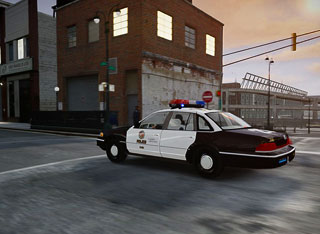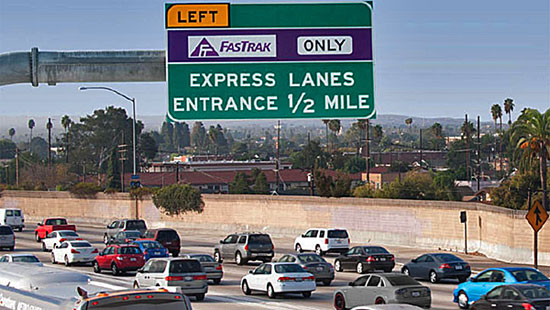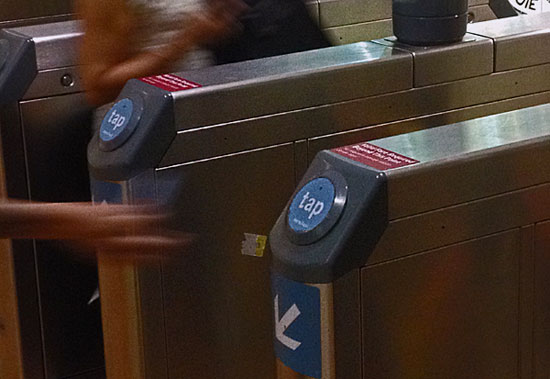A cop’s cop
October 31, 2013
Daniel Sullivan wore his LAPD blues like the rest of the command staff, but he was definitely cut from a different cloth.
In an era when then-Chief Daryl F. Gates set a combative tone for the department, Sullivan, a deputy chief, refused to succumb to such them-against-us nonsense. That was evident in the unlikely relationship he and I forged.
Not long after my election to the Los Angeles City Council in the mid-1970s, I became the panel’s strongest critic of the department’s use of excessive force and its propensity for secretly building dossiers on perceived enemies, including me. Although Sullivan didn’t always agree with me, he said he respected my willingness to tackle the brass. And I, in turn, told him I respected the professional manner with which he and most of his colleagues performed their crucial and difficult responsibilities on behalf of the residents of Los Angeles.
With his jurisdiction stretching across my Westside district, Sullivan would become one of my “go-to” guys when I needed thoughtful and blunt guidance on a criminal justice issue. I’d go on ride-alongs with him until the wee hours to get his unique take on the city he patrolled. Then we’d compete on the racket ball court. He had a boyish, Irish grin straight out of Central Casting.
Many years ago, Sullivan and an LAPD colleague, Joe De Ladurantey, published a book called “Criminal Investigation Standards.” To this day, that volume sits on my shelf—a continuing reminder that you don’t have to be in lock-step with a person to form lasting professional and personal ties, if the relationship is grounded in mutual good will.
As you may have suspected, I’m writing about Sullivan because I learned last week that he passed away.
The last time I talked to him was not long after the 9/11 attacks, years after his retirement. He called me from, of all places, Pakistan. He said he’d been hired by the U.S. government for a border security and police modernization project to help that nation secure its borders. Then I lost touch; I heard he moved to Palm Desert and was easing his way into retirement.
One of the LAPD’s brightest stars, Sullivan had the policing and political skills to become chief of police one day. Only a quirk of timing and the lack of a vacancy prevented that from happening during his years within the department. What a shame. He was the closest friend I had in the LAPD, and I will miss him and what our friendship represented.
Posted 10/31/13
Support floods the L.A. River
October 31, 2013

A greener Los Angeles River, as depicted in this rendering, is on the way under federal financing plans.
The Los Angeles River is getting a lot of love these days. The infamous concrete channel that’s been likened to a scar on Los Angeles’ civic psyche is now on the front burner to receive major improvements, and it’s got a lot of political muscle in its corner.
On Tuesday, as Mayor Eric Garcetti led a contingent of city officials and activists to rally support in Washington D.C. for a massive project to restore the river’s natural habitat and create more open space for the public, the L.A. County Board of Supervisors waded into the effort from a continent away.
Acting on a motion by Supervisor Gloria Molina, the Board voted 3-0 to back Alternative 20 of the Los Angeles River Ecosystem Restoration Feasibility Study, and to send a letter of support to federal agencies, President Barack Obama and the Los Angeles Congressional delegation. Supervisors Michael D. Antonovich and Don Knabe abstained from the vote. Alternative 20 is the most sweeping of four alternatives reviewed in the study—which was commissioned by the United States Army Corps of Engineers—and it comes with a $1 billion price tag that would be shared by the City of L.A. and the federal government.
Lewis MacAdams, president of Friends of the Los Angeles River, a non-profit group dedicated to restoring the waterway, said the Supervisors’ move adds much-needed momentum to the cause.
“It makes it clear on every level that the people of Los Angeles want to see the restoration of the river to the largest possible scale,” MacAdams said. “What you’re seeing from the Board of Supervisors is a commitment to the restoration of the river from the area’s most powerful political body.”
When the Corps released its study on plans to restore 11 miles of the river between Griffith Park and downtown L.A. last month, the long-awaited report met with a lukewarm reception. Of the four alternatives analyzed, the Corps tentatively recommended Alternative 13, the second-least-extensive option. It would restore 588 acres of habitat and create four miles of new trails, three new restrooms and five wildlife viewing areas. But MacAdams said that, while those improvements are welcomed, the $453-million plan still wouldn’t do L.A.’s waterway justice.
“The Corps wants to get out on the cheap, so they aren’t even paying attention to their own study,” MacAdams said. “Alternative 13 only restores minimal habitat.”
But MacAdams is optimistic about getting something better. He said the growing list of supporters for a larger project now includes U.S. Senators Barbara Boxer and Dianne Feinstein, along with local members of the House of Representatives and Minority Leader Nancy Pelosi. But while Mayor Garcetti and other supporters are pushing for Alternative 20, the project faces an uphill battle in Congress, where budgetary constraints and partisan gridlock are the order of the day. On Tuesday, Feinstein acknowledged that it may be necessary to find a middle ground. (Another option in the feasibility study, Alternative 16, splits the difference between the two plans—including some, but not all, of the improvements for a price tag of $840 million.)
“Even if we don’t get what we want and have to settle for [Alternative] 13 or 16, it begins to take back the river, and that’s a journey that’s going to take a long time,” MacAdams said.
The L.A. River was encased in concrete after repeated flooding devastated parts of the city in the early part of the 20th century. The massive project stopped the flooding, but also destroyed miles of habitat and transformed the river into an eyesore, driving local residents from its banks and making it the butt of jokes on a national level.
In recent years, interest in revitalizing the river has surged. In 2010, the Environmental Protection Agency declared it a “navigable waterway,” paving the way for enforcement of the Clean Water Act within its 834-square-mile watershed. And just this past summer, a kayaking pilot program experimented with literally navigating the river.
All three options under consideration would return 13 currently-underground streams to the surface, create new habitat and restore, at least partially, three adjacent properties—Taylor Yard, Piggyback Yard and Pollywog Parcel. Alternatives 16 and 20 also would add terracing along stretches of the riverbank, remove some of the concrete and create new wetlands. However, only Alternative 20 would connect the river to L.A. State Historic Park, bring large-scale restoration to the river’s confluence with the Verdugo Wash and widen part of the river bed.
For the county, Alternative 20 would be a big help in managing the watershed, said Mark Pestrella, an assistant director for the Department of Public Works. While the Army Corps is tasked with taking care of the stretch of river where the project would occur, the county Flood Control District manages other sections of the waterway. Bringing more people to the river would induce them to help take care of it and support its continued improvement, Pestrella said. The restoration project would join an ongoing evolution of the urban river that stretches back to the 1980s and includes the 1992 Los Angeles River Master Plan, the first study to take a comprehensive look at the entire length of the river to look for opportunities for recreation, restoration of habitat and creation of open space.
“We are midstream—the County sees this as the next step,” Pestrella said. “We’ve done hundreds of millions of dollars in L.A. River Master Plan improvements already.”
Because Alternative 20 adds new park space and improves connections to neighboring communities, county officials and other supporters say it would draw more people seeking recreation opportunities.
“Until people actually reach out and touch the environment and nature, they don’t know what they don’t have,” Pestrella said. “Once people make an investment in it that improves their life, they just want more of it. We’re funded by the public so we need that buying in—we need people to turn toward the river.”
Posted 10/31/13
Code busters beware
October 29, 2013
Dusan Pavlovic is making a real nuisance of himself.
As a member of the Los Angeles County Counsel’s office, it’s his singular mission to make life difficult for people who violate Los Angeles County’s public nuisance codes for everything from operating neighborhood drug houses to building structures without permits to running raves in warehouses rented under false pretenses.
Then there’s the downright creepy.
“We found one house that had concrete prison-style cells underneath,” Deputy County Counsel Pavlovic recalled. “The owner said he constructed it as a bomb shelter but the Sheriff’s Department suspected it may have been used to keep undocumented immigrants.”
On Tuesday, the Board of Supervisors gave Pavlovic and his small code-enforcement unit a much-needed boost in their “nuisance abatement” efforts for Los Angeles County’s unincorporated areas: a new ordinance that, for the first time, allows the county to collect daily fines, attorney’s fees and administrative costs.
“When you hit them in the pocket book, that’s where it hurts,” Pavlovic said. “They’re more attentive to the problem.”
Pavlovic, who has led the enforcement team since its creation eight years ago, said the existing public nuisance law needed toughening because violators had little to fear, given the unlikelihood of judges giving jail time for most code transgressions.
“You’d be surprised how many times people choose to ignore the issue,” explained Pavlovic, who pushed hard for the stiffer penalties. “They tell us, ‘Do what you want.’ Now we will.”
The ordinance, which has been on the books for decades, bans property uses that are “detrimental to the community’s tranquility and security.” Those include activities that, according to the law, “endanger public health, safety and welfare, invite crime, reduce property values, degrade the environment and negatively impact the quality of life of the residents.”
Pavlovic said he’s seen—and heard—it all out there since joining the county counsel’s office in 2005. “I tell you, these people get pretty creative,” he said.
For example, there was a property owner in Topanga Canyon, who, for reasons that remain unclear, perched an automobile on the roof of his carport. Rather than remove the vehicle as ordered by the county, the violator, according to Pavlovic, “just took a couple of plywood boards and enclosed the car so it was no longer visible. He said, ‘You see, it’s no longer there.”
Some violators, on the other hand, are so open about their entrepreneurial misdeeds that they practically invite neighbors to drop a dime on them. Take the case of an East Compton man who was running an illegal “chop shop” at his home. Pavlovic said the man not only was dismantling cars but was then selling parts in the front yard.
“Residents kept complaining, and he kept dismantling,” Pavlovic said.
Pavlovic said he doesn’t want to sound like a cliché but that he’s committed to “improving the quality of our neighborhoods and eliminating these public nuisances.”
“We’ve all been in situations where we’ve had a bad neighbor,” he added. “I think that’s something every person can relate to.”
Posted 10/29/13
Toll roads on a roll, minus fee
October 24, 2013
With drivers flocking to the ExpressLanes pilot project and revenue from the toll roads exceeding projections, Metro’s Board of Directors voted to continue to waive a controversial maintenance fee for L.A. County drivers who use the lanes only occasionally.
The board’s unanimous vote means that the $3 monthly maintenance fee will continue to be dropped for infrequent users at least until the pilot program wraps up early next year. The waiver had been set to expire on Friday, Oct. 25.
The toll roads pilot project, funded by a $210 million grant from the United States Department of Transportation, is set to conclude on Feb. 23, 2014, but if successful could be made permanent.
At the Metro board meeting Thursday, a motion to permanently drop the maintenance fee levied on occasional users was sent back to committee. Supervisor Zev Yaroslavsky, a board member who supports dropping the occasional user fee as a matter of fairness, argued in favor of moving proactively to make the waiver permanent. Given the overall boost in toll road revenue and the increase in drivers signing up for the transponders needed to take part in the program, revenue lost by waiving the maintenance fee is minimal, he said.
“Revenues generally on the ExpressLanes are far in excess of what anybody had anticipated,” Yaroslavsky said. “What we’re finding now, I believe, is that more people are signing up for [ExpressLanes] transponders because they haven’t been required to pay this fee.”
However, Supervisor Mark Ridley-Thomas said it was too soon to tinker with the program, and Supervisor Gloria Molina said there shouldn’t be a “rush to judgment” on dropping the fee before there’s a fuller study of how that might affect revenue available to reinvest in transit improvements in communities along the ExpressLanes corridors. “I don’t think we should make it permanent,” she said.
Stephanie Wiggins, who is heading up the pilot project for Metro, said that dropping the maintenance fee would cost the agency $1.5 million a year. But, she said, that is offset by the overall spike in revenue: By the end of last month, the ExpressLanes already had generated more than $20 million in gross revenues, well ahead of the $18 million to $20 million anticipated by the project’s conclusion.
According to Metro forecasts, between $16 million and $19 million of that would be available for reinvestment for transportation improvements within the corridors, Wiggins said.
In addition to the unforeseen revenue, far more people are using the program than the 100,000 originally anticipated. As of last month, 176,243 were participating, with 85,102 of those deemed occasional users because they make three or fewer trips a month on the ExpressLanes.
The first ExpressLanes opened on an 11-mile stretch of the 110 Freeway last November. A second stretch on the 10 Freeway from Alameda Street in downtown Los Angeles to the 605 Freeway opened in February.
All ExpressLanes motorists—including carpoolers—are required to obtain a FasTrak transponder and to create an account from which tolls are deducted. Except for carpoolers, all users of the system pay to drive on the ExpressLanes, with amounts varying according to distance traveled and time of day. But, to the chagrin of many, only the occasional users were targeted with the monthly maintenance fee.
The board’s decision in April to temporarily lift the $3 fee had a beneficial effect, Wiggins said.
“Throughout the county, residents are benefiting from the five-month waiver,” she said, noting that the impact has been greatest among users in the South Bay, where the number of FasTrak accounts is highest.
Marianne Kim, representing the Automobile Club of Southern California, told Metro’s board that complaints to AAA about the program have gone down since the waiver went into effect.
Beyond the positive data on revenue and driver participation in the program, there also was some generally upbeat news on travel speeds in the two ExpressLane zones.
Average travel speeds on the northbound 110 improved year-over-year in both the ExpressLanes and the general purpose non-paying lanes next to them during morning rush hour, according to measurements made by Caltrans in May and June. During the afternoon rush hour, the southbound ExpressLanes also were moving faster than they did before the project, but the general lanes were moving more slowly—30.3 mph, compared to 34.7 mph during the same period in 2012.
On the westbound 10, morning rush hour speeds improved in both the toll and general purpose lanes. However, speeds in both kinds of eastbound lanes were down during the afternoon rush hour; traffic was said to be “significantly impacted” by a Caltrans construction project in the area.
Posted 10/24/13
Kitty cat 90210
October 24, 2013
Even a cat can dream big in this town. Take Harry. Just five months ago, he was wandering the alleys. Now he lives in a landmark 6.5-acre Beverly Hills estate.
At the Virginia Robinson Gardens, a 102-year-old historic property owned by Los Angeles County, staffers say the white stray with the black tail and ear has been an unofficial colleague since April.
“He just showed up one day and started following one of the gardeners around,” said Superintendent Timothy Lindsay on a recent morning. “He was very friendly, very domesticated—and very vocal.”
“Meoooow,” confirmed Harry, glancing up from the tiled Italianate pool, where he appeared to be alternately drinking and scouring the blue water for signs of sea life.
“He likes to think there are fish in there,” whispered Lindsay.
Harry switched his tail. Lindsay said he was recently named Chief Mouser and Rat Patrol.
The property, built by the heir to the Robinson’s Department Store fortune and bequeathed to the county after his widow’s death in 1977, is a paradise, even by non-cat standards. A national, state and local landmark, it is now operated by the county Department of Parks and Recreation and supported by the nonprofit Friends of Robinson Gardens as one of Los Angeles County’s first great estates.
The owners, Harry and Virginia Robinson, were community pillars in L.A. for decades, famed for their star-studded parties, their elaborate landscaping and the many pets on whom they lavished attention.
“I think they were more dog people,” Lindsay said, noting the canine paw prints in the concrete walks connecting the estate’s five gardens. “And they had 300 blue songbirds that she imported from New Zealand, and a toucan that spent time on the loggia, eavesdropping on all the Hollywood gossip.”
But Lindsay said the cat, who sauntered in without even a microchip of identification, had such a confident air that the gardens staff named him after the estate’s founder. After a student working on the grounds volunteered to take him to the veterinarian to make sure he was vaccinated against rabies, the staff and live-in groundskeeper took him in and started to feed him.
“He’s a great mouser, and averages two a day,” says Lindsay. “He brings them to the kitchen door and drops them. And he’s so entertaining—he flops over like a dog and wants you to rub his belly. He sleeps in the laundry room in the staff quarters adjacent to the main house. We have a little bed for him.”
Harry isn’t the only creature to have adopted the gardens, says Lindsay. Coyotes drop in occasionally, and two horned owls have taken up residence in the estate’s King Palm grove. But, he says, the cat is the estate’s only domestic pet.
“He’s made this his house,” Lindsay said as Harry trotted across the flossy emerald lawn, settling in for a nap near the Renaissance Revival pool pavilion, which was modeled after Italy’s famed Villa Pisani. “The cat’s no dummy. He picked the nicest place in the neighborhood.”
Posted 10/24/13
Bike-sharing gears up
October 24, 2013
A regional bicycle-sharing program finally appears to be getting onto the fast track in Los Angeles County.
Metro’s Board of Directors on Thursday voted to begin the process of determining how a program would be structured here, including how best to solicit bids from companies interested in running it.
The board instructed Metro staff to get to work on the nuts and bolts of the issue next month, with a report due back in January on how best to proceed.
That report should include an analysis of how the program might be rolled out in phases, based on things like “existing bicycle infrastructure, existing advertising policies, current ridership trends, and transit station locations,” according to a motion by L.A. Mayor Eric Garcetti, supervisors Zev Yaroslavsky and Don Knabe, and two other Metro directors, Mike Bonin and Pam O’Connor.
Bike-sharing has become increasingly common in European cities over the past two decades, and is enjoying a surge of popularity in some U.S. cities as well. The motion cited programs in Chicago, Denver, Minneapolis, New York and in the San Francisco region, where “Bay Area Bike Share” launched earlier this year.
But in Los Angeles—despite the board’s long-running desire to implement a bike-share program here—there have been some bumps in the road.
For example, a plan backed by former L.A. Mayor Antonio Villaraigosa, which would have created a bike-sharing network within the city of Los Angeles, foundered when it turned out that the operating company’s plan to sell advertising on its kiosks was precluded by some existing city contracts.
“The Los Angeles region has seen a variety of bicycle share efforts, but none have taken hold because of a lack of regional coordination,” the motion noted.
In light of that, the Metro board also voted to support Santa Monica, which has received a grant to create its own bike-share system, in its efforts to obtain an extension on that funding so that its project can be built in tandem with the regional whole.
As the region’s transit network grows, a bike-sharing program aims to make it easier for public transportation commuters to take the bus, train or subway to get close to their destination, then grab a rental bicycle from fleets strategically located at key stations to conquer the final leg.
Finally, in a sign of the times for a changing Los Angeles region, the motion adopted Thursday also, for the first time, makes supporting bicycling as a “formal transportation mode” an official part of Metro policy.
Eric Bruins, planning and policy director for the Los Angeles County Bicycle Commission, welcomed the board’s action. He said it was understandable that it had taken so long for development of a regional bike-share program here, given the sprawling and complex nature of Los Angeles County and the need to come up with viable business models for this area.
After years of trying, is this time the charm? Bruins raised his crossed fingers and smiled.
Posted 10/24/13
Capturing money for women’s jail
October 24, 2013

The board moved to protect more than $100 million in state grants for a "women's village" in Lancaster.
For months, problems inside Los Angeles County’s jail system for men have taken center stage at Board of Supervisors meetings. This week, it was the women’s turn.
Faced with the potential of loss of more than $100 million in state grants, the supervisors on Tuesday approved an 11th-hour plan to shift the location of a proposed “women’s village” to Mira Loma Detention Center in Lancaster to free-up space at the current jail for women in Lynwood.
Initially, new beds for female inmates were planned for the Pitchess Detention Center in the Antelope Valley. But the project stalled because of real estate easement issues, prompting restless state officials to warn the county that it could lose its conditionally-awarded grants to other jurisdictions without swift action on an alternative.
According to L.A. County officials, the alternative turned out to be better than the original.
Substantial space opened up at Mira Loma after the federal Immigration and Custom Enforcement Bureau terminated its contract there, leaving behind detention beds and infrastructure that, for less money, would allow for more beds than at Pitchess—1,604 versus 1,156. The additional beds, according to the county’s Chief Executive Office, would be used to help inmates with mental health and substance abuse issues as well as to prepare the women for “reentry” into society.
“I think that L.A. County has an opportunity with this facility to design a national model for the treatment of female offenders,” said Assistant Sheriff Terri McDonald, who oversees the department’s custody operations.
Currently, female inmates are packed into the Century Regional Detention Facility in Lynwood, where capacity is at 160 percent, according to sheriff’s officials, who say most inmates are being released after serving just a fraction of their sentences, if any at all.
The Mira Loma plan is part of a much broader undertaking by the county to rethink inmate housing for the nation’s largest county jail system, including razing the archaic Men’s Central Jail, where allegations of violence by sheriff’s deputies has led to scores of reforms. Among other things, the Board of Supervisors has begun exploring the possibility of constructing a stand-alone facility for the incarceration and treatment of mentally ill inmates at a potential cost of more than $1 billion. On Tuesday, the board voted only to shift the site of the proposed “women’s village” to Mira Loma, not to approve its actual renovation.
The only supervisor to speak against the plan was Mark Ridley-Thomas. Despite the danger of losing more than $100 million in state funds, he said he wanted to approach jail construction “in a comprehensive manner rather than a piecemeal manner.”
“All money ain’t good money in terms of where we think we should be headed,” Ridley-Thomas said of the grants.
But Supervisor Zev Yaroslavsky called the board’s action a “no brainer” in light of the widely agreed upon need for new beds for female inmates. Yaroslavsky said that, if the county failed to act on the grant money now, state officials might reject requests for money down the road.
“My first question would be: ‘Well, you had money on the table. You didn’t pick it up. Why are you coming to us now?’” Yaroslavsky said, adding: “The logical extension of doing nothing is to do nothing. And doing nothing is not in our best interest from any point of view.”
The board’s vote was 4-0, with Ridley-Thomas abstaining.
Posted 10/24/13
Metro locks in more revenue
October 17, 2013
Do the math. Taking L.A.’s subway system off the honor system should mean a bump for Metro’s bottom line—and that’s exactly what happened in the first month since gate-latching was completed.
According to Metro’s data for September—the first full month available—revenues have increased by 40% when compared to May, the last month before the lengthy gate latching process started. If that increase holds steady, it would mean an extra $6 million in collected fares each year, said David Sutton, Metro’s deputy executive officer in charge of the project.
“An increase in revenue like this can be put back into the system,” Sutton said. “We can increase our hours of operation, add train cars, we can buy more buses—there is a whole myriad of things we can do with that money.”
Meanwhile, weeding out freeloaders means that ridership on the subway lines has decreased, even as the number of paying customers using TAP cards to gain access to the Red and Purple lines has skyrocketed.
Fare evaders are now unable to freely enter the system and, for the most part, have moved on to other modes of travel, Sutton said, giving paying customers a better ride by improving their security and safety—and by opening up a little more elbow room.
Even with the gates latched, some committed scofflaws will always find ways to game the system, Sutton said. About 19,000 people entered the subway without paying in September, using a variety of tricks or blatantly jumping the gates. Metro is in the process of tweaking the new system to make fare evasion more difficult, and the Sheriff’s Department is issuing citations to catch those who squeeze through.
Nonetheless, in most places the system is working well. During one morning rush hour this week, transit patrons streamed through the gates at the North Hollywood station, tapping in succession as they rushed to catch the next train. At ticket vending machines, fare purchases were made swiftly, with no long lines forming.
A few cyclists were slow getting through, lifting their bikes over the top of turnstiles or, like one young woman, tapping a fare card before pushing through an emergency gate. Sutton said cyclists can currently use the elevator to access the system, but few avail themselves of the option. Metro is planning to add a new gate, similar to the gates for disabled patrons, that will offer cyclists an easier path.
And a few fare-beaters were still trying to get a free ride. One teenager hopped over the gate, singing loudly to the music on his headphones.
But, glitches aside, gate latching has already proved transformative for the transit agency. Metro currently is working to bring some latched gates to its expanding light rail system. While not all stations can be latched due to logistical barriers, Sutton said he believes fare collection will continue to improve as Metro latches some stations along the Gold, Blue and Green lines, an effort scheduled for completion by February, 2014.
More than a million TAP cards are currently active in the system, about twice as many as when ticket vending machines were made TAP-only two years ago.
“If you look at the numbers and you look at the behavior, people are tapping,” he said. “I don’t think we’ve ever had gates; it’s a big behavioral change.”
With the assistance of help phones near entry points, Metro has been able to accomplish that change without having staff present at every station.
“It’s been incredibly smooth—we were expecting a lot more customer pushback,” Sutton said. “The biggest thing I remember is people that would give us a thumbs-up and say ‘it’s about time.’ People that pay want and expect everyone else to pay.”
Posted 10/17/13
Bark if you love story time
October 17, 2013

Hanna, a Labrador retriever mix, interrupts a library learning session to show the student a little love.
Reading out loud can be a tall order for beginners, unless they have an accepting, non-judgmental audience.
And if that audience is wagging, licking or even drooling, so much the better.
Last Saturday, kids at the Studio City Library had a chance to try out their reading skills on an unusual cadre of canine literati—courtesy of an organization called BARK, which for more than 5 years has been bringing specially-trained dogs into libraries throughout the county and beyond.
The goal of the program is to help kids who may be nervous about their reading ability loosen up and have a little fun with the learning process.
“The dogs don’t judge or laugh at them if they make a mistake,” said Josie Gavieres, director of BARK. “It makes reading a fun experience—kids will even turn the book around to show the dogs the pictures. It’s really cute.”
To get your child involved, check BARK’s calendar for numerous other times and locations. If you want to lend a hand—or paw—to BARK’s mission, the organization is seeking human and canine volunteers to staff events and spread the word.
Gavieres started BARK, which stands for Beach Animals Reading with Kids, in 2007, out of a desire to get kids reading and her love of animals. Starting with just one dog, she drew on past experience training guide dogs for the blind and working for animal shelters. She discovered that there were similar programs throughout the country but decided to forge her own path, contacting elementary schools in the Long Beach area. After 9 schools declined, the 10th said yes.
“Then it just started growing,” Gavieres said.
Word about the pet project spread quickly. Despite its beach-oriented name, the organization now draws volunteers throughout L.A. and Orange counties—at schools, libraries, senior living facilities and veteran centers. Volunteer owners and dogs typically come from each facility’s area. BARK receives funding from animal nonprofit organizations, businesses and private donors. The demand is still growing, with 8 libraries and 20 schools currently on a waiting list.
BARK requires all of its dogs to be Canine Good Citizens, an American Kennel Club certification program that focuses on training responsible owners and well-mannered dogs. After that, each dog is evaluated to make sure it is patient and well-behaved enough to work in crowds of kids, who often swarm the dogs in excitement.
“We want that dog whose tail is wagging and he’s smiling and rolling on his back saying ‘Please, more,’ ” Gavieres said.
Dogs will be dogs, though, and the strict code of silence in libraries is sometimes more than they can handle. If distracted by an outside disturbance, the dogs occasionally bark out of instinct, Gavieres said. On the other hand, the silent atmosphere can make the animals a bit too peaceful at times. “We do have dogs that occasionally fall asleep while listening,” Gavieres chuckled. “I have instructed the volunteers to say, ‘He listens better with his eyes closed.’ ”
From librarians’ perspective, the dogs serve an important purpose—getting kids and parents to go to libraries in the first place. Once there, the real work of improving literacy can begin. Last month marked the first time BARK came to Studio City Library, said Wendy Westgate, the children’s librarian. Westgate is a big fan of the program, and she approached her branch manager with the idea of bringing in the dogs monthly for a test run. So far, it’s been successful, Westgate said, drawing 22 kids in September.
Meanwhile, Gavieres revels in the stories from satisfied parents, teachers and librarians.
“Every time I hear about a little boy or a little girl who wouldn’t read that we helped … that just opens up the world for them.”
Posted 10/10/13


















 Check for the latest closure information
Check for the latest closure information








